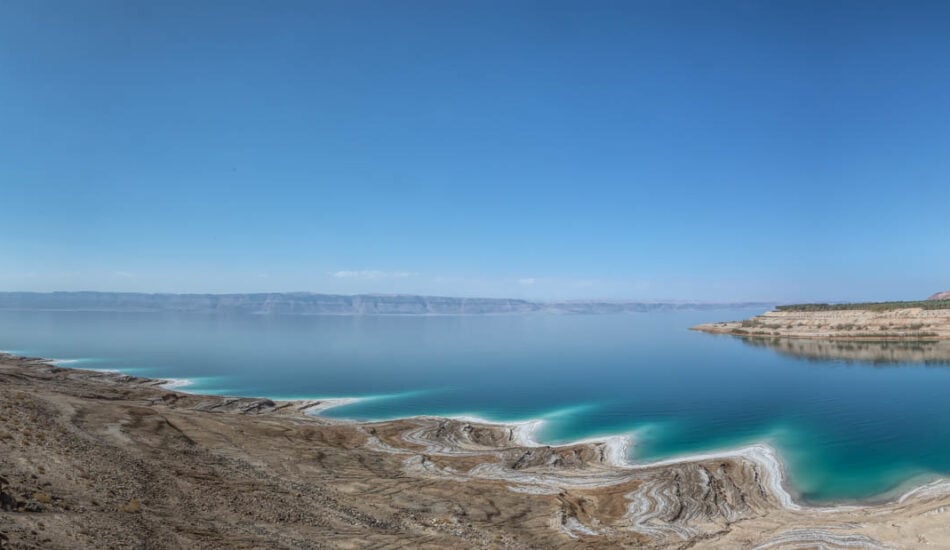
The West Bank and Gaza Strip face multiple challenges to their water security. These challenges are interconnected and have hindered the water sector’s development for the past two decades.
Political constraints
The Palestinian water problem is primarily a political one. Israel, with its resources, infrastructure, and technology, could provide the Palestinians with the amount of water they need immediately. Israel owns mega desalination plants on the Mediterranean Sea and is currently selling water to Jordan. However, Israel uses water as a tool to control the Palestinians.[1]
Every war between the two countries has severely harmed the water and wastewater infrastructure in Palestine, particularly in the Gaza Strip.[2] This has, in turn, had a significant negative impact on the people living there. The lack of a sufficient, safe, reliable and affordable water supply, as well as the absence of an effective wastewater treatment system, not only adds to their daily suffering but also poses a health and safety risk.[2]
Making matters worse is the JWC’s consistent rejection of water-related projects.[3] As a result of subsequent construction delays and a lack of CA approval, any WWTP approved for construction is required to apply for another permit to provide treated wastewater for irrigation. Meanwhile, the WWTP discharges clean water back into the polluted streams.[4]
Inefficient water use and water losses
There are substantial water losses, mostly caused by leaks in the poorly maintained freshwater and irrigation distribution networks. In 2019, losses reached 62% in the West Bank and 58% in the Gaza Strip for some service providers. The PA estimated that the revenue generated by reducing non-revenue water (NRW) from 38% to 35% would amount to $4 million yearly and contribute to improving water quality and dependency on unsafe water sources. According to the WSRC, multiple municipalities, such as Khan Younis, Idhna, Kafr Rae, Nuba and Qalqilya, managed to reduce NRW by detecting water meters’ reading errors and inaccuracies and maintaining the water supply network.[5]
Inefficient use of treated wastewater is another challenge. A total of 175.5 MCM of wastewater are generated, but only 9.5 MCM are treated. Although 5% is reused, farmers complain each summer about the insufficient supply of irrigation water for their crops. However, farmers are willing to irrigate their crops with this source of water as the supply network reaches their farms instead of polluting it again by discharging it into streams.[6]
Institutional weaknesses
The PWA’s tasks are complicated by the political situation and overlapping responsibilities among stakeholders. This has hampered long-term planning and regulation. It has also resulted in a lack of development effectiveness and the need to work on an emergency rather than a strategic basis. Moreover, water sector stakeholders are fragmented, with most service providers acting independently of each other. This demonstrates a significant gap between law/strategies and reality.[7]
Financial issues
As stated in section 6.3. Financing of the water sector, most water projects are funded by donors. Nowadays, donors tend to avoid funding projects that require JWC approval due to the JWC’s approval practices. This is preventing the development of water infrastructure in Areas B and C as well as which requires the PWA to be proactive. Donors were put off funding megaprojects in Gaza because of Israel’s long history of targeting infrastructure, including WWTPs, sewage pumps, water supply networks and electricity plants.[8]
Climate change
The most significant environmental effects of climate change for Palestine’s population are expected to be a decrease in precipitation coupled with seasonal variation, anomalies and warming. Climate change models predict that warming in the southern and eastern Mediterranean will be greater than the global annual mean (between 2.2°C and 5.1°C) under a realistic emissions scenario. Meanwhile, annual precipitation rates are expected to fall – by 10% by 2020 and 20% by 2050 – with an increased risk of summer drought.[9]
Data availability
Information on the water sector in Palestine is hard to come by. Data are not widely published and, in many cases, are inconsistent. Statistics on water availability or sector consumption are difficult to acquire, many policies and laws are not made public and other information, such as groundwater withdrawal, is considered confidential. The PWA’s most recent quantitative report was published in 2011. Changes to the government’s data governance policy are urgently needed to help address this data gap.
[1] Amnesty, 2017. The Occupation of Water.
[2] Al-Mezan Center for Human Rights, 2021. The Effects of Israel’s Military Offensive on Gaza’s WASH Facilities.
[3] The World Bank, 2009. West Bank and Gaza – Assessment of Restrictions on Palestinian Water Sector Development.
[4] Wawi, A, 2017. Governance Assessment of the Wastewater Reuse Policies and Practices in Palestine: The Cases of Jenin and Nablus.
[5] WSRC, 2019. Performance Report for Water and Wastewater Service Providers.
[6] Wawi, A, 2017. Governance Assessment of the Wastewater Reuse Policies and Practices in Palestine: The Cases of Jenin and Nablus.
[7] The World Bank, 2009. West Bank and Gaza – Assessment of Restrictions on Palestinian Water Sector Development.
[8] Al-Mezan Center for Human Rights, 2021. The Effects of Israel’s Military Offensive on Gaza’s WASH Facilities.
[9] UNDP, 2013. Palestinian Climate Change Adaptation Strategy and Programme of Action for the Palestinian Authority.
